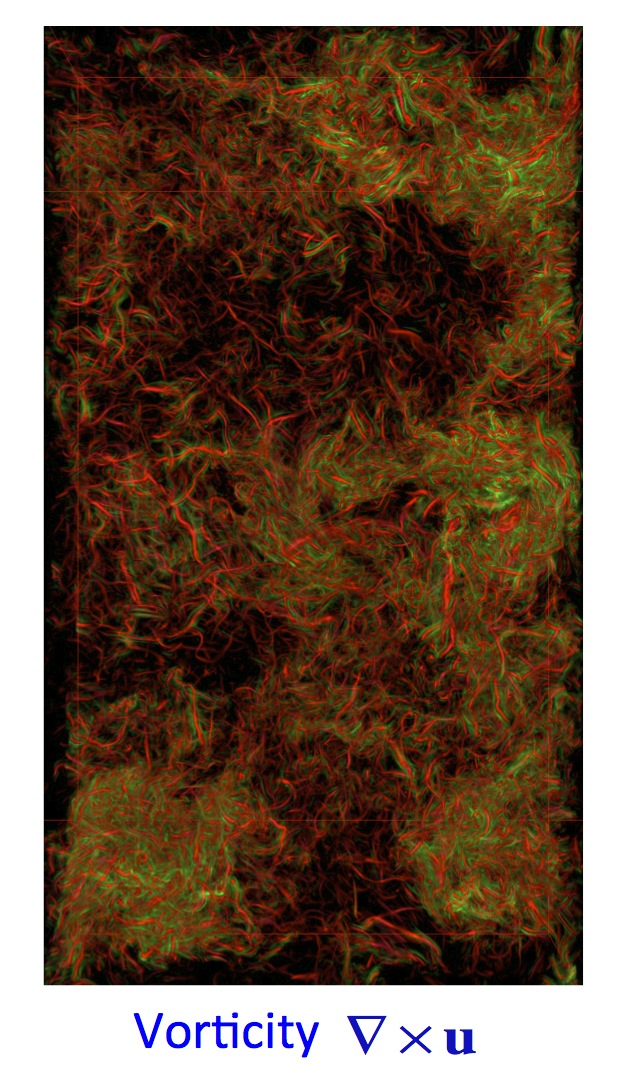Johns Hopkins Turbulence Databases

Forced Isotropic Turbulence
Dataset description
Forced isotropic turbulence:
Simulation data provenance: JHU DNS code (see README-isotropic for more details).
- Direct numerical simulation (DNS) using 1,0243 nodes.
- Navier-Stokes is solved using pseudo-spectral method.
- Energy is injected by keeping constant the total energy in shells such that |k| is less or equal to 2.
- After the simulation has reached a statistical stationary state, 5,028 frames of data with 3 velocity components and pressure are stored in the database. Extra time frames at the beginning and at the end have been added to be used for temporal-interpolations.
- The Taylor-scale Reynolds number fluctuates around Rλ ~ 433.
- There is one dataset ("coarse") with 5028 timesteps available, for time t between 0 and 10.056 (the frames are stored at every 10 time-steps of the DNS). Intermediate times can be queried using temporal-interpolation.
- There is another dataset ("fine") that stores every single time-step of the DNS, for testing purposes. Times available are for t between 0.0002 and 0.0198).
- A table with the time history of the total kinetic energy and Taylor-scale Reynolds number as function of time can be downloaded from this text file.
- Radial spectrum E(k) averaged over time can be downloaded from this text file.
Disclaimer: While many efforts have
been made to ensure that these data are accurate and reliable within
the limits of the current state of the art, neither JHU nor any other
party involved in creating, producing or delivering the website shall
be liable for any damages arising out of users' access to, or use
of, the website or web services. Users use the website and web services
at their own risk. JHU does not warrant that the functional aspects
of the website will be uninterrupted or error free, and may make
changes to the site without notice.
Last update: 12/2/2019 3:14:35 PM